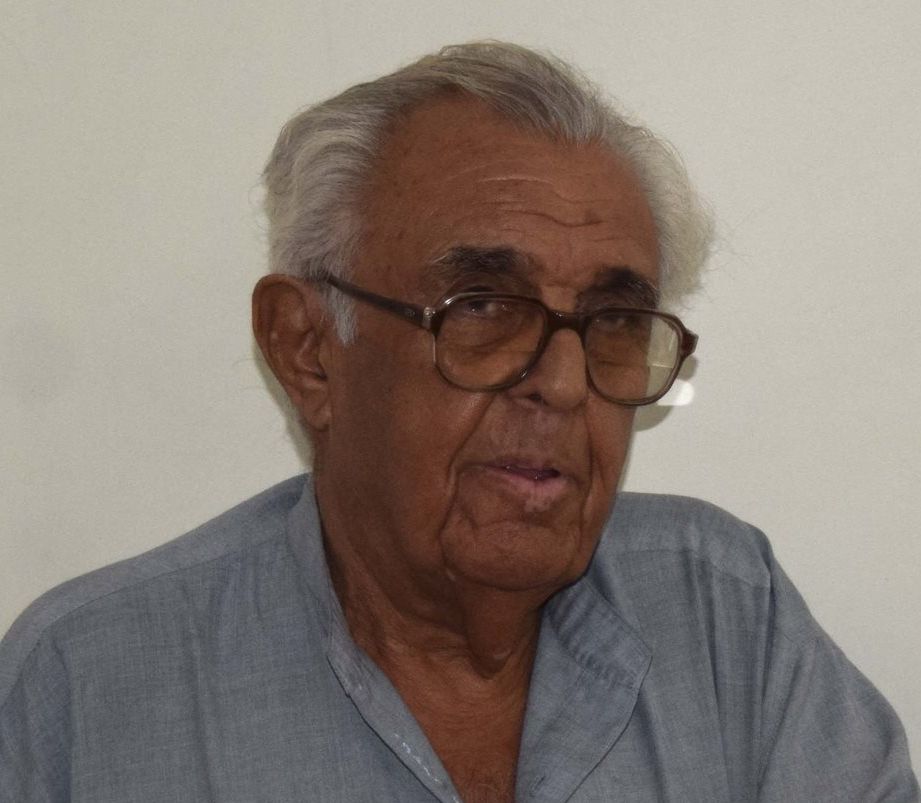Latest Contributions
The story of Rambagh Golf Course, Jaipur
Category:
Tags:

President of the Indian Peoples Theatre Association and a Fellow of the Royal Asiatic Society of Great Britain and Ireland, Ranbir Sinh has lived a multifaceted life as an actor, director, playwright, historian, author, and public intellectual. He resides in Jaipur and is still going strong with his research, writing, and theatre.
In the British period, the golf course in Jaipur was situated where Hasanpura is now. However, over the years, it disappeared. It was Maharani Gayatri Devi, a tennis player of the standard of Davis Cup, and an excellent, keen golfer, who thought of having a new golf course.
Being a hockey player of the national level, I had always thought that golf was a game for retired older people. I learnt it after I got married. My father-in-law, Rana Prakaram Jung Bahadur, was a very keen golfer. I had gone to the Allahabad golf course with him, and there he told me to hit some shots. Not knowing anything about golf, I took a No.2 club, which was nearer to the hockey stick, and asked him what I should. He told me that I should place the golf ball nearer to the flag. The first shot was an air one, and the second shot sent the ball miles away. I became a golfer.
One day, Maharani Gayatri Devi expressed her desire of having a golf course. I volunteered to plan the course.

Maharani Gayatri Devi of Jaipur playing golf. 1940s or 50s
The ground of Rambagh Palace was full of dried grass with thorns. I took the help of Gul Mohammad. I told him that Maharani Sahiba wants a golf course, and we have to make one. The whole area was full of snakes and rats. Both of us equipped ourselves with lathis and bravely walked into the grass, which offered us formidable opposition. It was impossible to go further.
I then decided to make a plan of the area first. I made a plan as to where will the tees, and the Browns will be. The first fairway was over the Polo Ground, where we did not have any problem. But the other option was to burn the grass, but there was a danger that fire may spread all over the area. Gul Mohammad and I decided that we will only burn the grass of fairway and leave the rest to make the rough. It was dangerous, and we had to take all precautions that the fire does not spread. We succeeded.
The second phase was to plan where the first tee and the brown would be. A golf course is also known as links, which means that the tee, fairway, and greens should be linked together. One very important aspect of the course is that no fairway should cross another fairway. The first tee and the last green should be close to the Club House. For this Gul Mohammad and I spent several hours. Finally, we were able to decide the links.
The third phase was to decide where to place the tee, mark the area of fairway, plan the distance of the fairway from the tee to brown, and the placement of the bunkers. The most difficult part was to make the browns. The browns were the innovation of the British. In all muffasil (smaller, rural) towns, the golf courses had browns. This was done considering the water crisis. Greens need a lot of water, which was not easily available. Browns were made with the mixture of bajri (type of Silt-Sand used in construction) and used mobiloil (engine oil for cars and motorcycles). The real art was the mixing of bajri and mobiloil, which Gul Mohammad knew very well. In most of the places, the browns were flat ground, but I had left the unevenness so that putting became an art. I must give credit to Gul Mohammad who had to prepare browns almost every day.
The course was ready, and I invited Her Highness to play a round and inaugurate the course. One afternoon, when I went to the course, to my horror I found tyre marks of a jeep on all the fairways. Of course, my anger knew no bounds. I enquired from Gul Mohammad if he knew who the culprit was. He told me that it was Maharani Sahiba along with a Sikh Sardar who went around the course. I came to know later that it was I.S. Mallik who was invited by her to see the course and give his opinion. I was quite proud of myself when she told me that it was a good job done.
She was elected as the Captain of Rambagh Golf Club for life. I was made the secretary and remained so till 1970, when I left Jaipur and went to Delhi. Among the golfers were the Kalsi brothers, Bhim Singh, Ratan Singh, George Golding, N.C.Dutta, Himmat Singh, Zorawar Singh Ramesh Divecha, and others.

Rambagh Golf Course. Jaipur. 2019. Photo credit: Sudhir Kasliwal
His Highness Man Singhji used to practice hitting polo balls, and on the other corner, I used to practice golf. One day he called me and asked if I was still the secretary. I told him that Zorawar Singh, who was the Rajasthan Government's Chief Secretary at that time, had taken over. He ordered me that I should go and tell him that he should immediately have the lease signed by him for 99 years\; otherwise, the course will be taken over by the government. His foresight has come true.
____________________________________________________
© Ranbir Sinh. Published June 2019.
Editor's note: We approve all comments written by people\; the comments must be related to the story. The purpose of the approval process is to prevent unwanted comments, inserted by software robots, which have nothing to do with the story.
Comments
Add new comment